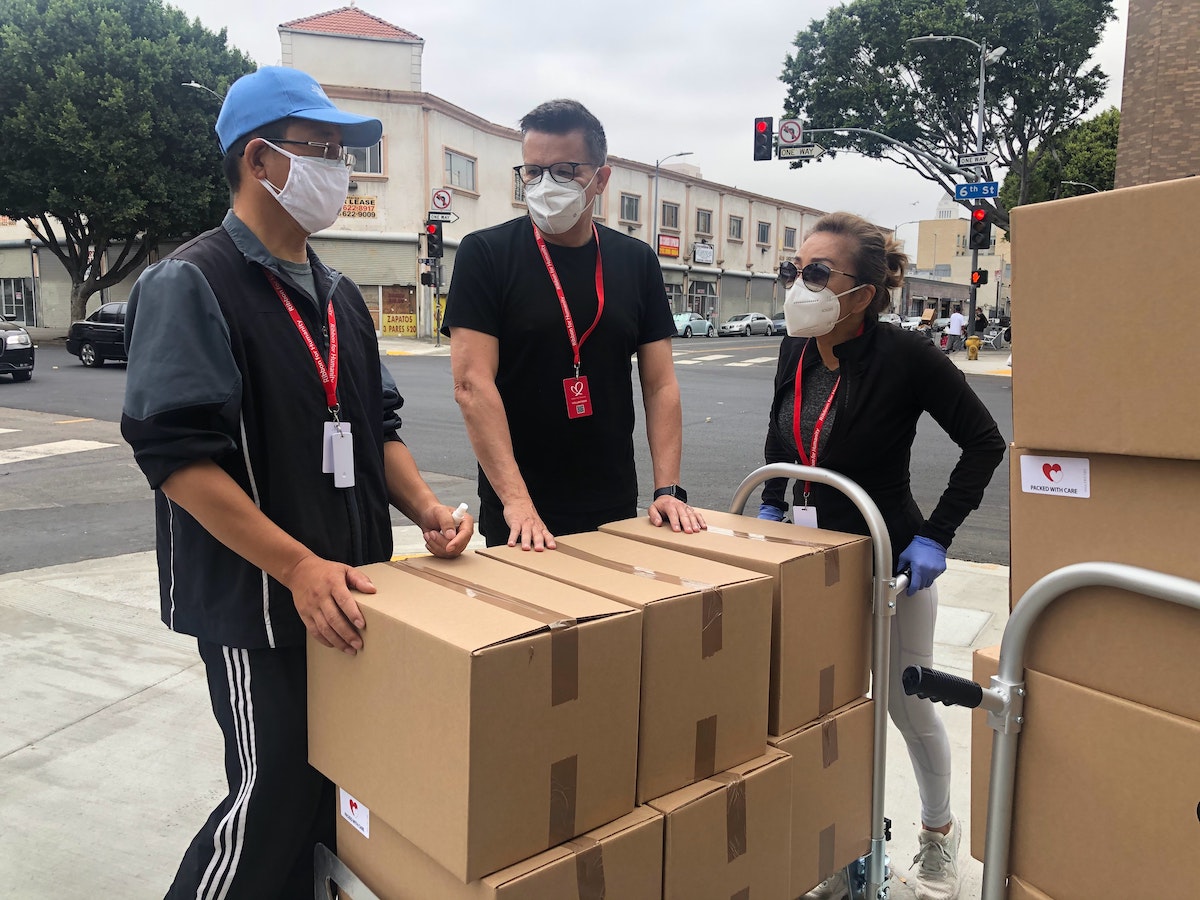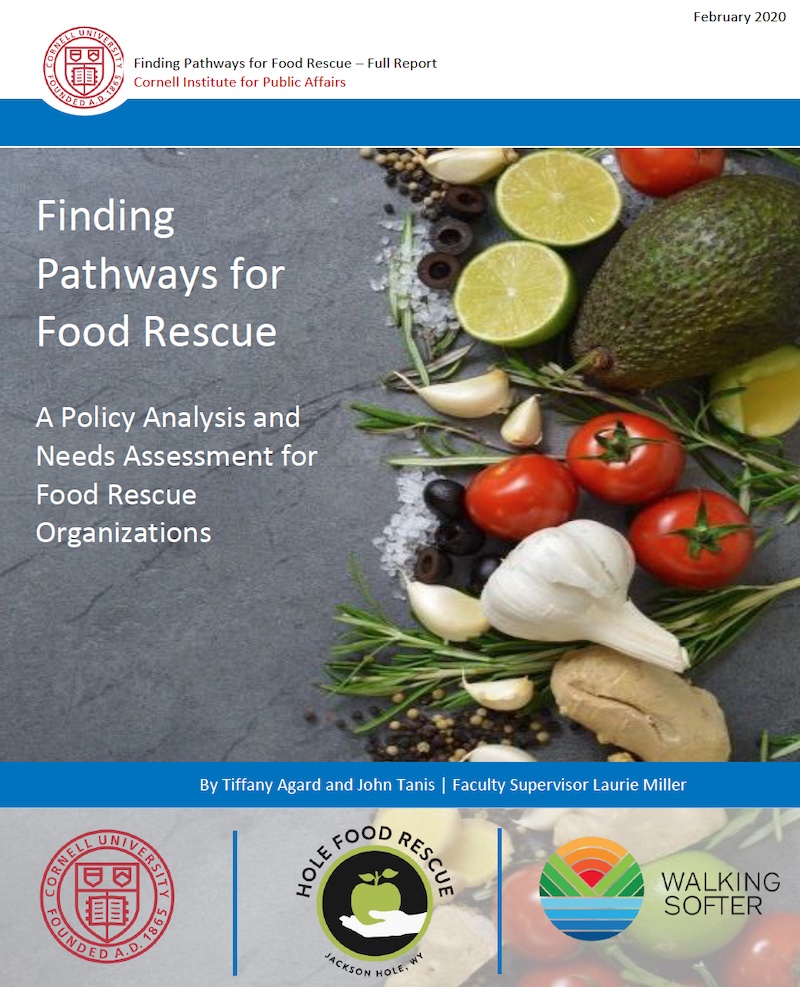Food rescue organizations have gone through a lot since the beginning of 2020.
Earlier this year a team at the Cornell Institute for Public Affairs published a report assessing the state of food rescue throughout the U.S. Spurred by the sharp rise in food waste, food insecurity and food donations brought about by the pandemic, researchers John Tanis and Tiffany Agard wanted to assess the geographic, social and policy conditions where rescues were located and the operational challenges food rescue organizations report experiencing. Their research also aimed to offer broad recommendations for improving the state of food rescue nationwide, tailored specifically at organizations and policymakers.
Working with data provided by our own Food Rescue Locator, the Food Rescue Alliance, ReFED and more, the full report offers a snapshot of a system that’s working hard to fight food waste and food insecurity. We’ve collected some of the biggest insights from the report below.
Food rescues are most prominent in urban areas and locations with donor-friendly policies
The team at Cornell performed a geospatial analysis of more than 300 food rescues using organization location data, finding that most food rescue organizations exist in dense, urban areas. Three-quarters (75%) of organizations in the data set were located in large metropolitan areas and their surrounding counties with population densities of 250,000 or greater. These larger metro areas have a high density of food generators (like grocery stores, restaurants, catering services and more) and are thus potential predictors of where food rescue organizations exist.
While many urban areas experience moderate to high levels of food insecurity, thus cementing the need for food rescue and distribution organizations, the Cornell research also highlighted a lack of organizations in rural areas nationwide, including those with highly food insecure populations. While the dataset may be more limited when it comes to representing organizations and programs outside of urban areas, it underscores a need for more attention and effort to represent the food needs of rural populations.
The Cornell report also showed that states and regions with food donation-friendly policies and incentive programs have a higher concentration of food rescue organizations. Outside of the Good Samaritan Food Donation Act, which is a federal law protecting food donors, 24 states have expanded liability protections, while another 10 states offer expanded tax incentives that offer different donors a percentage of the donated food’s market value.
Using food donation policies outlined in the ReFED Policy Finder, the Cornell team mapped states with policies and organizations and conducted a statistical analysis to find which policies, if any, were a factor in the presence or quantity of food rescue organizations. Results showed that states with limited labeling requirements of food, such as fewer requirements for ingredient lists and other packaging information, are 22.4% more likely to have a food rescue organization.
States that protect food donations of past sell-by or best-by dates were also more likely to have rescue organizations, by approximately 7.9%. While other protection policies and tax incentives likely contribute to the presence and/or success of food rescue organizations, the team outlined that more research is needed to be able to accurately state their significance.
Rescues need help providing education to donors
In addition to mapping food rescue organizations and various factors, the team at Cornell also conducted surveys and interviews to better understand the challenges organizations face. Many respondents spoke to the storage, infrastructure and logistical constraints of operating a food rescue, such as limited access to cold or dry storage or staffing and transportation challenges. But another common throughline had to do with organizations’ ability to inform and conduct outreach to their food donors.
More than two-thirds of surveyed organizations (68%) noted that collateral and media resources explaining food safety, liability protections and tax reporting could help them significantly increase the amount of food that was rescued. With many food rescue organizers focusing mainly on the day-to-day operations of recovery and distribution and securing grant funding, there is little time to develop educational documents and resources.
Agard and Tanis recommend that food rescues — either through affiliation groups like the Food Rescue Alliance or networks like Food Rescue US — band together to create a shared media hub in which rescue organizations can obtain and customize assets and resources to be used in their education and outreach efforts. The researchers note that a collaborative undertaking between food rescue organizations and government agencies could ultimately help bolster the amount of businesses and individuals that participate and lead to significantly more recovered food.

Technology and innovative business models are propelling food rescue forward
As part of their efforts, the team at Cornell also outlined a growing list of technology services that are equipping organizations nationwide to better do their jobs. The report outlines donor-specific databases and tools like MEANS, Food Connect and ChowMatch, which allow donors to post available surplus foods and have approved nonprofit rescue organizations reach out to schedule pickups. Groups like Farmlink and Replate, who assist in managing logistics and rescuing food in the pre- and post-consumer foodstreams, are also included.
In addition to the platforms and businesses that are making an impact, the Cornell researchers also highlight growing trends in the food recovery space that show promise in assisting food rescue organizations. Ideas like transit partnerships with rideshare companies or meal delivery services like Uber, DoorDash and Meals On Wheels can help utilize existing transportation methods to ease the burden placed on food rescues and volunteers. Donated, recovered or unsold food supermarkets or sales windows can allow the food insecure to access foods and choices they may not typically have.
Accessing the full report
The full, 77-page Finding Food Rescue Pathways report from the Cornell Institute for Public Affairs has plenty of additional insights from food rescue organizations, details on the food policy landscape and recommendations to further food rescue efforts nationwide. To dive in, simply click this link to download and access the PDF.

